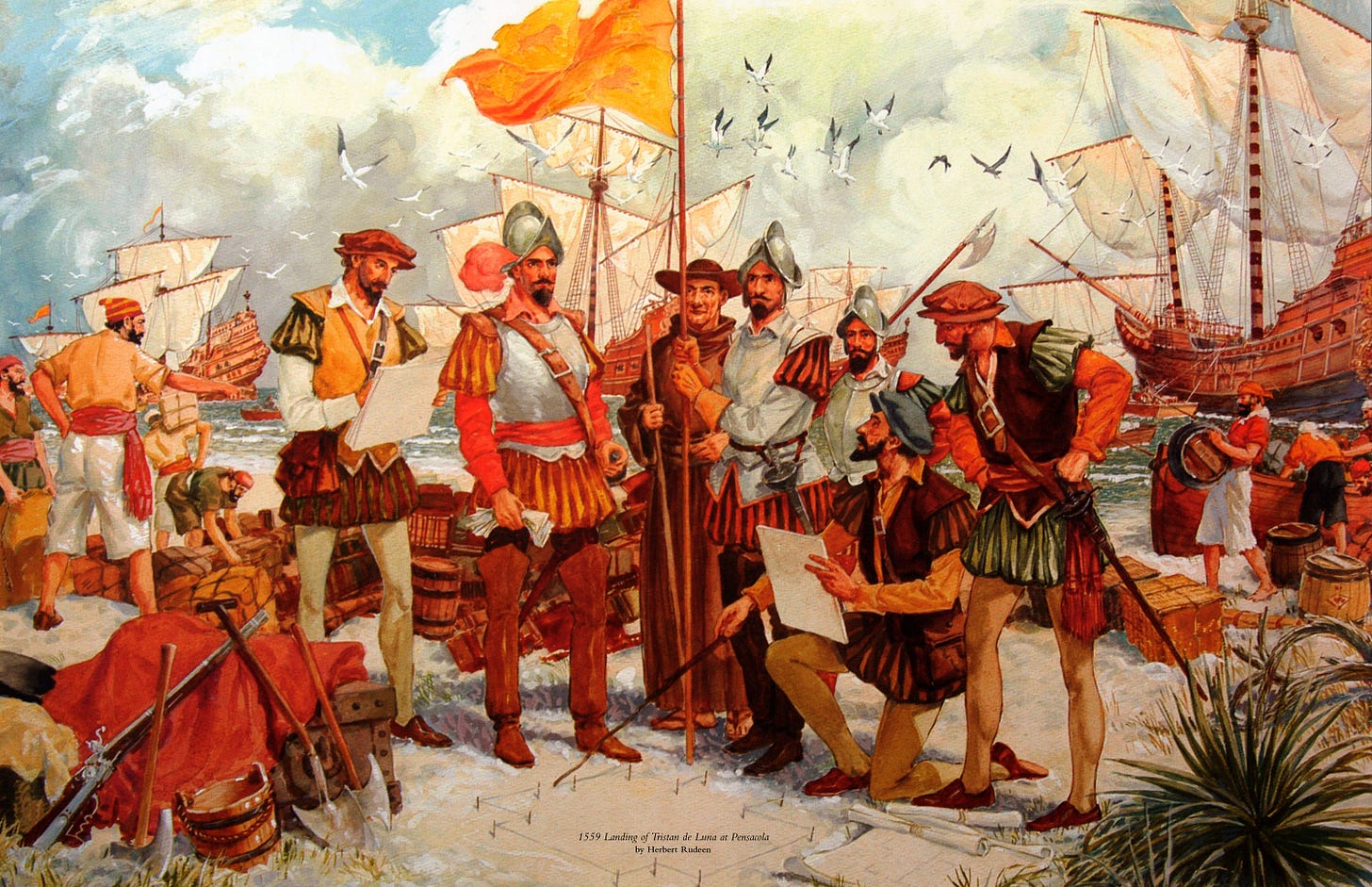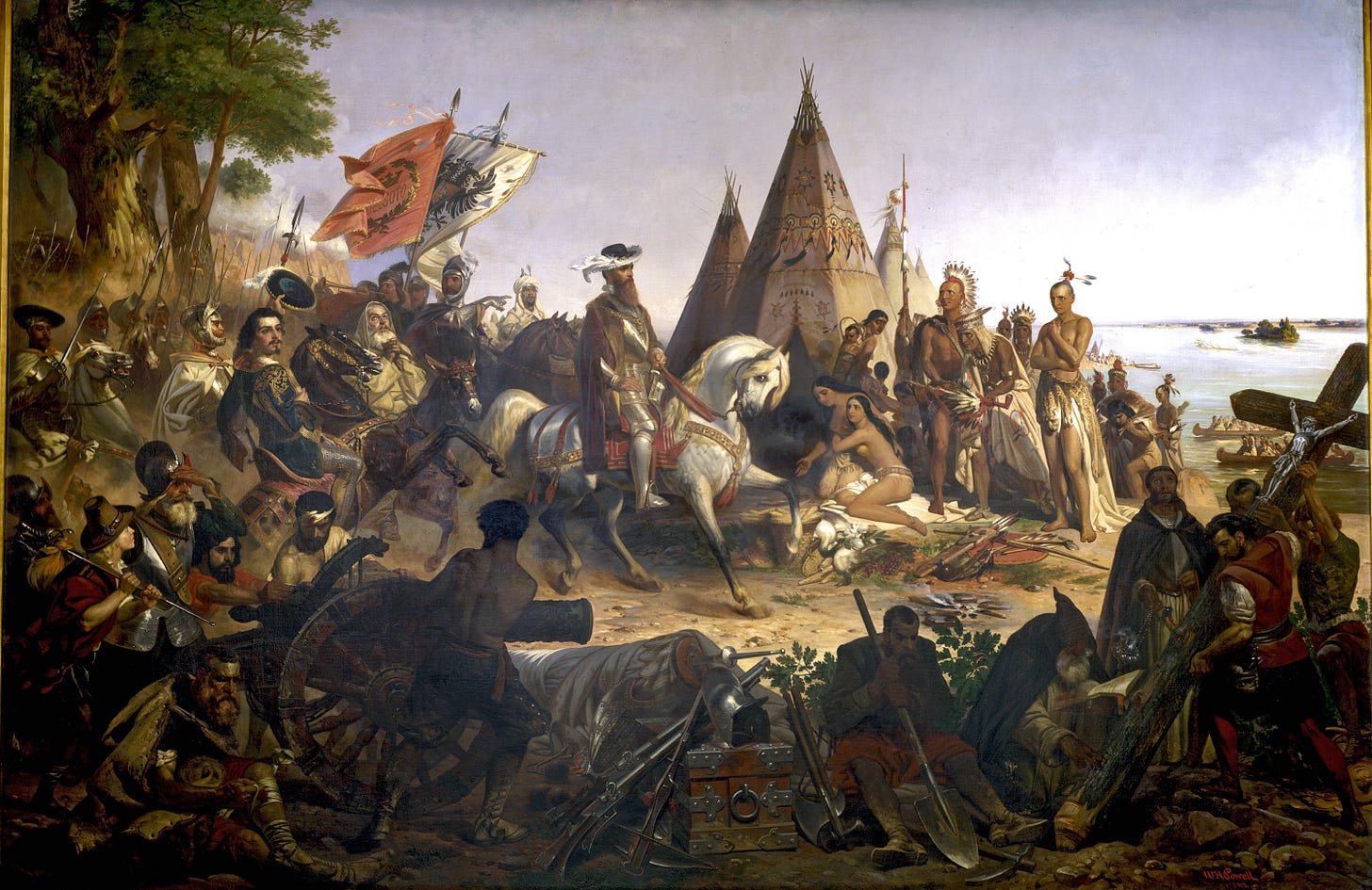The successful expeditions by European explorers such as Ferdinand Magellan, John Cabot, and Amerigo Vespucci in the late 15th & early 16th century made travel to the Americas more accessible with proper mapping. European aristocracy of the early modern period knew that the long-term investment of territories in the new continents across the Atlantic would lead to fame, favor, and fortune. With this in mind, the creation of official colonial efforts began across North, Central, and South America. Many of these are well-documented successes (i.e. the creation of Jamestown in Virginia or the establishment of Rio De Janeiro in Brazil) but what has been overlooked are the attempts that became worthless ventures, often at the cost of human life.
De Luna Landing. Courtesy of Pensacola Historical Society
Lucas Vázquez de Ayllón founded San Miguel de Gualdape in 1526, the colony lasted only two months, but in that time they faced disease, hunger, and hostile Native Americans until finally succumbing to an all-out revolt by the 100 African slaves. It was the first known European settlement in the continental United States, the first to bring enslaved Africans to North America, and the location of the first documented slave revolt. Ayllon’s colony was established in the mouth of the Sapelo River in present-day McIntosh County, Georgia. Created with the charter to establish relations with the local native population for trade as well as proselytization by Franciscan priests.
On September 29, 1526, the settlement was christened San Miguel de Gualdape in observance of the feast of St. Michael the Archangel. It was too late in the season to plant crops and the local wildlife was meager. The surrounding waters were teeming with fish but the settlers were either sick or unwilling to catch fish. The shallow water table and porous soil made it easier to contaminate their wells with human and animal waste. Water-born illnesses such as dysentery quickly ravaged the settler population and the attempts by Ayllon to trade with the local natives only lead to hostility.
Detail of Ribero map showing land granted to Lucas Vázquez de Ayllón on southeast coast of North America, the site of the first Spanish colony established in the present-day United States.
By October the death toll had increased steadily, including Ayllon himself. Two factions arose as a consequence, one which wanted to return to Hispaniola and one that wanted to wait to be re-supplied by the Island. In-fighting began with the leader of the mutiny Gines Doncel coming to power. Set to return to Hispaniola with those who supported him, a group of enslaved people in the settlement set fire to the home of Gines Doncel. No details are known; Oviedo one of the survivors remarked simply that the enslaved "had their reasons" for this action. In the ensuing confusion, Doncel and his fellow mutineers were arrested. There is no indication of what happened to the arsonists. It has been stated that they escaped living with Native Americans, but there is no contemporary account saying that enslaved Africans escaped. Originally leaving Hispaniola in July with 600 settlers, by the time they returned in November only 150 settlers of the original expedition remained.






